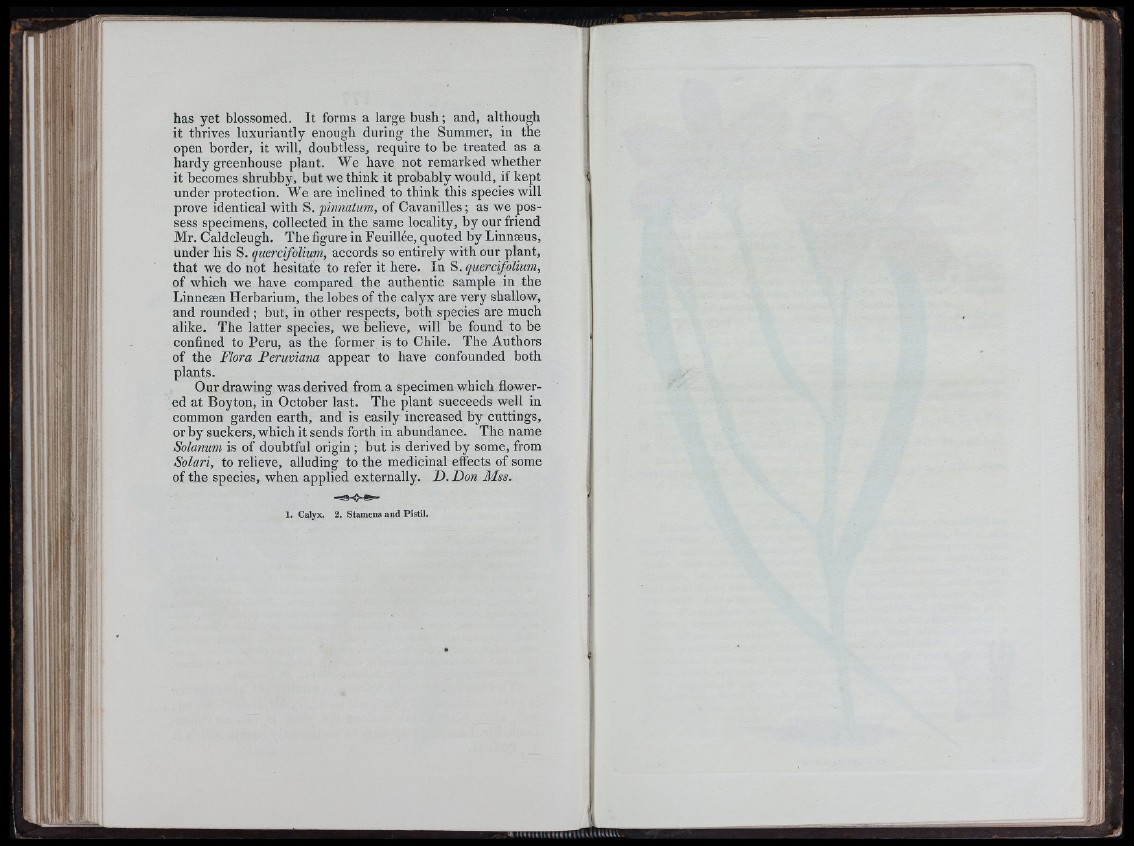
has yet blossomed. It forms a large bush ; and, although
it thrives luxuriantly enough during the Summer, in the
open border, it will, doubtless, require to be treated as a
hardy greenhouse plant. We have not remarked whether
it becomes shrubby, but we think it probably would, if kept
under protection. We are inclined to think this species will
prove identical with S. pinnatum, of Cavanilles ; as we possess
specimens, collected in the same locality, by our friend
Mr. Caldcleugh, The figure in Feuillée, quoted by Linnæus,
under his S. quercifolium, accords so entirely with our plant,
that we do not hesitate to refer it here. In S. quercifolium,
of which we have compared the authentic sample in the
Linneæn Herbarium, the lobes of the calyx are very shallow,
and rounded ; but, in other respects, both species are much
alike. The latter species, we believe, will be found to be
confined to Peru, as the former is to Chile. The Authors
of the Flora Feruviana appear to have confounded both
plants.
Our drawing was derived from a specimen which flowered
at Boyton, in October last. The plant succeeds well in
common garden earth, and is easily increased by cuttings,
or by suckers, which it sends forth in abundance. The name
Solanum is of doubtful origin ; but is derived by some, from
Solari, to relieve, alluding to the medicinal effects of some
of the species, when applied externally. D. Don Mss.
1. Calyx. 2. Stamens and P istil.
«TTiïïTmmiUiluukv